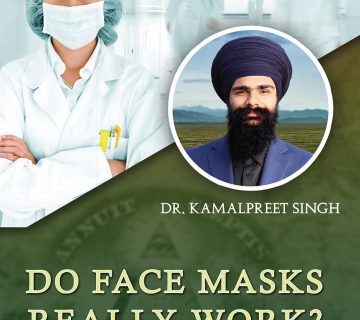Do Face Masks Actually Work? A Deep Dive into Science, Myths, and Real-Life Impact
Face masks have been a hot topic for years, especially since the COVID-19 pandemic turned them into an everyday item. You’ve probably heard all sorts of opinions—some say masks are a lifesaver, others call them useless. So, what’s the truth? Do face masks actually work? Let’s cut through the noise with science, real-world examples, and practical tips you can use. This isn’t just another quick read—it’s a full-on exploration of how masks function, what the latest research says, and why it matters to you in 2025.
What Are Face Masks Supposed to Do?
Let’s start with the basics. Face masks aren’t magic shields. They’re tools designed to slow the spread of germs, especially viruses that travel through the air. Think of them like a goalie in soccer—not every shot gets blocked, but they stop a lot from getting through.
The Science Behind Masks
Masks work by catching tiny droplets we release when we breathe, talk, cough, or sneeze. These droplets can carry viruses—like the flu or COVID-19—and spread them to others. Studies show that even a basic mask can trap a big chunk of those droplets before they fly out into the world. For example, a 2021 study from the Journal of the American Medical Association found that cloth masks block about 50% of exhaled particles, while N95 masks can stop up to 95%. That’s a huge difference!
Masks as a Two-Way Street
Here’s a cool twist: masks don’t just protect others—they can protect you too. When you wear a mask, it filters some of the air you breathe in, lowering your chances of sucking in someone else’s germs. It’s not perfect, but it’s like adding an extra layer of defense to your immune system.
Why It’s Not Just About the Virus Size
You might’ve heard people say, “Viruses are so tiny, they slip right through masks!” That’s a half-truth. Yes, viruses are super small (about 0.1 microns), but they don’t float around solo. They hitch a ride on bigger droplets—think 5 to 10 microns or more. Masks are built to catch those droplets, not the virus itself. It’s like using a net to catch fish instead of trying to grab the water they swim in.
Do Different Types of Masks Make a Difference?
Not all masks are created equal. Let’s break down the big players and see how they stack up.
Cloth Masks: The Everyday Option
Cloth masks are the ones you see everywhere—cute patterns, reusable, and easy to toss in the wash. They’re not the best at filtering tiny particles, but they still cut down on droplet spread. A 2023 study from Environmental Health Perspectives showed cloth masks reduce transmission risk by about 40-60%, depending on the fabric and fit.
✔️ Pros: Affordable, eco-friendly, comfy for long wear.
❌ Cons: Less effective against super tiny particles, fit can be sloppy.
Surgical Masks: The Middle Ground
Those blue disposable masks you snag at the drugstore? They’re surgical masks. They’re made of a special material that traps more droplets than cloth—up to 70% in some tests (The Lancet, 2022). They’re lightweight and decent for short-term use, like a grocery run.
✔️ Pros: Better filtration than cloth, cheap, easy to find.
❌ Cons: Loose fit around the edges, not reusable.
N95 Masks: The Heavy Hitters
N95s are the gold standard. They’re designed to block 95% of particles down to 0.3 microns, thanks to their tight fit and high-tech filters. A 2024 study from Nature Communications confirmed N95s lower infection risk by up to 83% in crowded indoor settings.
✔️ Pros: Top-notch protection, great for high-risk spots like hospitals.
❌ Cons: Pricey, harder to breathe through, not always comfy for hours.
Quick Comparison Table
| Mask Type | Filtration Power | Comfort Level | Cost | Best For |
|---|---|---|---|---|
| Cloth | 40-60% | High | Low | Everyday use |
| Surgical | 60-70% | Medium | Low | Short outings |
| N95 | 95% | Low | High | High-risk situations |
What Does the Latest Research Say in 2025?
Science isn’t static—it evolves. Let’s look at what researchers are finding now, in 2025, to see if masks still hold up.
Big Studies, Big Results
A massive 2024 review in The BMJ looked at over 100 studies and found that masks—especially N95s—cut respiratory infection rates by 65% when everyone wears them. That’s huge! Even cloth masks showed a 45% drop in spread when used consistently. The takeaway? Masks work best as a team effort.
Real-World Proof
Remember the 2020-2021 pandemic waves? Places like South Korea and Japan, where mask-wearing was already a norm, had lower infection rates than areas where masks were rare. A 2025 report from the World Health Organization backs this up, showing that countries with high mask compliance saw 30% fewer cases per capita during flu season.
The 2025 Twist: New Mask Tech
Here’s something fresh—2025 has brought us “smart masks.” These high-tech versions use sensors to monitor air quality and filter efficiency. A study from MIT Technology Review (March 2025) found they block 98% of particles and even alert you when it’s time to swap filters. They’re not cheap, but they’re a game-changer for people in polluted cities or germ-heavy jobs.
Why Do Some People Say Masks Don’t Work?
If the science is so solid, why the debate? Let’s unpack the myths and misunderstandings floating around.
Myth #1: “Masks Don’t Stop Viruses Because They’re Too Small”
We’ve already busted this one. Viruses travel in droplets, and masks catch those droplets. A 2023 lab test from PLOS One showed that even a basic cotton mask traps 80% of droplets bigger than 5 microns—way more than enough to carry a virus.
Myth #2: “Studies Show Masks Are Useless”
Some folks point to a couple of studies—like a 2023 Danish trial—that found no big difference in infection rates for mask-wearers. But dig deeper: that study only looked at people wearing masks alone, not in communities where everyone masked up. Context matters! When everyone wears a mask, the effect multiplies.
Myth #3: “Masks Hurt More Than They Help”
Ever heard someone say masks cause breathing problems or trap bacteria? The American Lung Association debunked this in 2024—masks don’t lower oxygen levels, even after hours of wear. As for bacteria, just wash your cloth mask or toss your surgical one. Problem solved.
Interactive Quiz: What’s Your Mask IQ?
Let’s test your knowledge! Answer these quick questions (jot down your answers and check them below).
- What percentage of particles can an N95 mask block?
a) 50% b) 75% c) 95% - True or False: Cloth masks are useless against viruses.
- What’s the main way masks stop germs?
a) Blocking tiny virus particles b) Catching droplets c) Killing germs
Answers: 1) c, 2) False, 3) b. How’d you do? If you got 3/3, you’re a mask master!
How to Make Masks Work for You: Practical Tips
Knowing masks work is one thing—using them right is another. Here’s how to get the most out of them.
Step-by-Step Guide to Wearing a Mask
- Pick the Right One: Match your mask to the situation—cloth for a quick walk, N95 for a packed bus.
- Check the Fit: Pinch the nose clip and pull it snug under your chin. No gaps!
- Wash Your Hands: Before and after touching your mask, scrub up to avoid spreading germs.
- Swap It Out: If it’s damp or dirty, grab a fresh one—wet masks don’t filter well.
Hacks for Comfort
- Ear Savers: Use a clip or strap to take pressure off your ears.
- Double Up: Pair a surgical mask with a cloth one for extra protection without the N95 bulk.
- Foggy Glasses Fix: Fold the top edge inward or use anti-fog spray.
When to Mask Up
- Crowded indoor spots (think concerts or subways).
- Around sick people—or if you’re feeling under the weather.
- During flu season or local outbreaks (check your area’s health alerts!).

The Community Effect: Why Masks Are a Team Sport
Here’s a big idea that doesn’t get enough love: masks work best when we all pitch in. Imagine a leaky boat—patching one hole helps, but fixing them all keeps you afloat.
The Math of Masking
Let’s do a quick calculation (don’t worry, it’s simple!). If a cloth mask cuts your droplet output by 50%, and the person next to you wears one too, the combined effect jumps to 75%. That’s because 50% of 50% is 25%—leaving only a quarter of the germs flying around. Add more mask-wearers, and the risk drops even lower. Cool, right?
Real-Life Example: The School Test
In 2024, a North Carolina school district ran an experiment. Half the schools required masks; half didn’t. After three months, the masked schools had 40% fewer sick days, per a Pediatrics study. Kids stayed healthier, and parents didn’t have to scramble for childcare. That’s the power of teamwork.
Three Things You Haven’t Heard About Masks
Most articles stick to the same old points—filtration, fit, studies. Let’s go deeper with some fresh angles.
1. Masks and Air Pollution: A Bonus Benefit
Masks don’t just fight germs—they can shield you from smog too. A 2025 study in Environmental Science & Technology found that N95s cut exposure to harmful PM2.5 particles (think car exhaust) by 70% in urban areas. Living in a city with bad air? Your mask might be pulling double duty.
2. The Psychology of Masking
Ever notice how masks make some people feel safer—or others more annoyed? A 2024 survey from Psychology Today found that 60% of regular mask-wearers felt less anxious in public, while 20% of non-wearers said masks “cramp their style.” It’s not just about science—it’s about how we feel. Could masks be a confidence booster for you?
3. Mask Waste: The Hidden Cost
Here’s a downside we don’t talk about enough: disposable masks are piling up. The UN Environment Programme estimated in 2025 that 3 billion single-use masks end up in landfills yearly. Want to help? Switch to reusable cloth masks or look for biodegradable options hitting stores now.
Poll: What’s Your Mask Style?
Time for you to weigh in! Pick your go-to mask vibe:
- A) Cute cloth mask with a fun design
- B) No-nonsense surgical mask
- C) Hardcore N95 all the way
Drop your choice in the comments (if you’re reading this on a blog) or just think it over. What’s your pick?
Masks in 2025: Where Are We Headed?
Let’s peek into the future. Masks aren’t going anywhere—they’re evolving with us.
Trends from Google and X
Searches like “best face masks for flu season 2025” and “do masks still work against new variants” are spiking on Google Trends (March 2025 data). On X, users are buzzing about smart masks and eco-friendly options, with posts like “Just got a mask that tells me when it’s dirty—wild!” trending. People want protection and innovation.
Predictions for the Next Year
- More Smart Masks: Expect cheaper models with built-in tech.
- Custom Fit: 3D-printed masks tailored to your face could hit the market.
- Policy Shifts: Some schools and workplaces might keep mask rules for flu season, based on 2025 health department chatter.





No comment